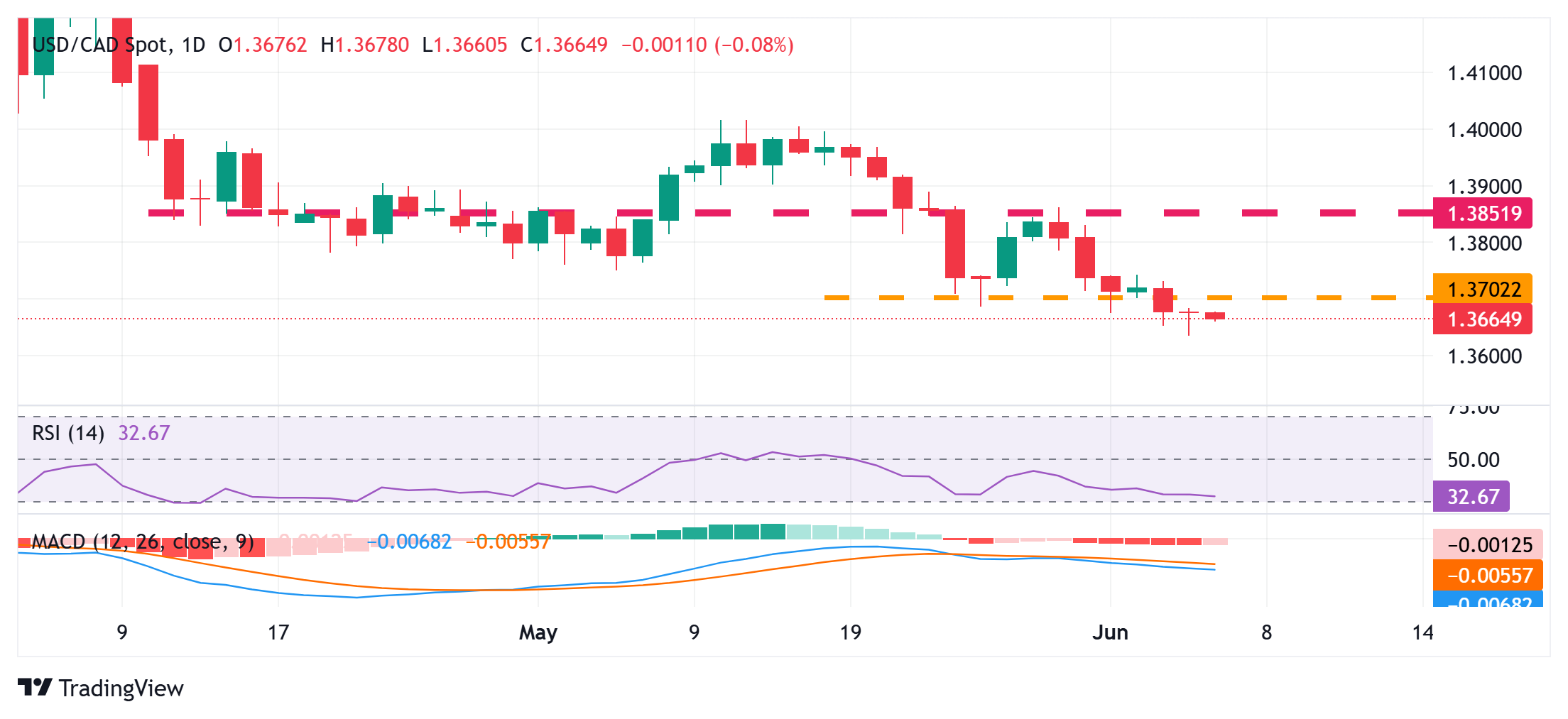USD/CAD Price Forecast: Seems vulnerable below 1.3700; US/Canadian jobs data awaited
- USD/CAD struggles to attract any meaningful buyers and consolidates near the YTD low.
- US-Canada trade deal hopes underpin the CAD, though a stronger USD supports the pair.
- The technical setup favors bearish traders and backs the case for further depreciation.
The USD/CAD pair extends its sideways consolidative price move for the second straight day on Friday and trades around the 1.3665 region during the early European session. Spot prices remain close to the year-to-date low touched on Thursday and seem vulnerable to sliding further.
The Canadian Dollar (CAD) continues to draw support from reports that a trade deal between the US and Canada could happen before the G7 Summit on June 15, which, in turn, is seen acting as a headwind for the USD/CAD pair. However, a goodish pickup in the US Dollar (USD) demand helps limit the downside ahead of the crucial monthly employment details from the US and Canada, due later today.
From a technical perspective, the overnight close below the 1.3700 mark for the second straight day and negative oscillators on the daily chart validate a bearish breakdown. Hence, some follow-through weakness below the 1.3635 region, the YTD low, en route to the 1.3600 round figure, looks like a distinct possibility before the USD/CAD pair eventually drops to the 1.3545 region and the 1.3500 psychological mark.
On the flip side, any attempted recovery might now confront an immediate strong barrier near the 1.3700-1.3710 region. The next relevant hurdle is pegged near the 1.3735-1.3740 area, which if cleared decisively might trigger a short-covering rally and lift the USD/CAD pair towards the 1.3775 intermediate hurdle. The momentum could extend further beyond the 1.3800 mark, towards the 1.3850-1.3860 heavy supply zone.
USD/CAD daily chart

Economic Indicator
Net Change in Employment
The Net Change in Employment released by Statistics Canada is a measure of the change in the number of people in employment in Canada. Generally speaking, a rise in this indicator has positive implications for consumer spending and indicates economic growth. Therefore, a high reading is seen as bullish for the Canadian Dollar (CAD), while a low reading is seen as bearish.
Read more.Next release: Fri Jun 06, 2025 12:30
Frequency: Monthly
Consensus: -15K
Previous: 7.4K
Source: Statistics Canada
Canada’s labor market statistics tend to have a significant impact on the Canadian dollar, with the Employment Change figure carrying most of the weight. There is a significant correlation between the amount of people working and consumption, which impacts inflation and the Bank of Canada’s rate decisions, in turn moving the C$. Actual figures beating consensus tend to be CAD bullish, with currency markets usually reacting steadily and consistently in response to the publication.

